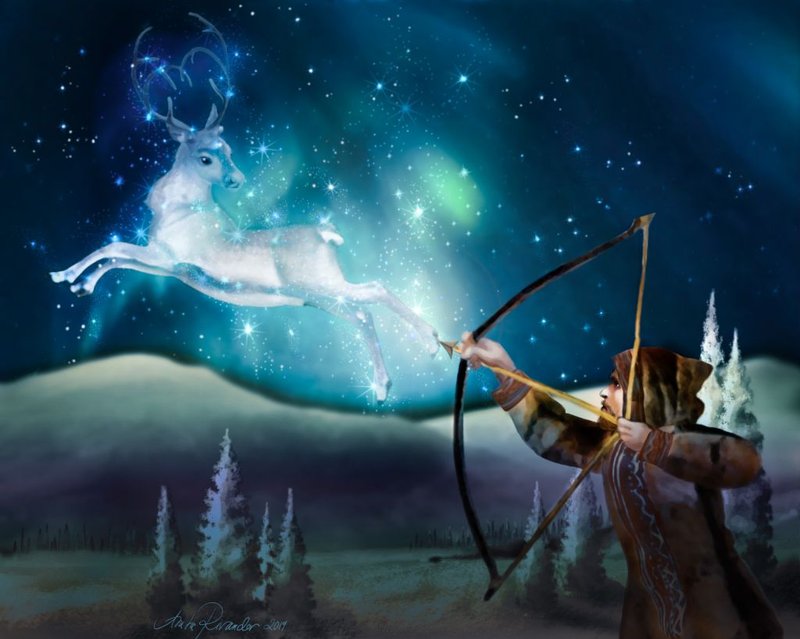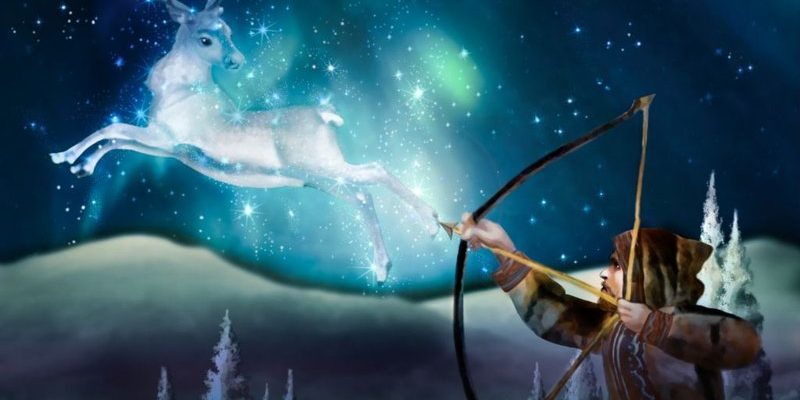
Reindeer, also known as caribou depending on where they are in the world, are remarkable animals with a variety of unique traits and behaviors. They roam the cold tundras of the Arctic and subarctic regions, showcasing their incredible adaptations to harsh environments. However, myths abound about their lives, capabilities, and even their appearance. So, grab your favorite warm drink, and let’s explore the truth behind these beautiful animals.
1. Reindeer Pull Santa’s Sleigh
You might have grown up believing that reindeer have a special role in Santa Claus’s magical journey. While it’s a charming story, the truth behind it is a bit more grounded. Reindeer are indeed capable of pulling sleds, but their connection to Christmas is more of a cultural tale than a biological fact.
In the wild, reindeer were historically used by Indigenous peoples of the Arctic for transportation. They’re strong and adaptive, making them great sled-pullers. However, the image of flying reindeer? Well, that’s purely the magic of Christmas that has captured hearts for generations. So, while they don’t literally fly, they sure do have the strength to carry a heavy load across snowy terrains.
2. All Reindeer are Male
Another widespread myth is that all reindeer are male. In reality, both male and female reindeer exist, and they possess their own unique traits. Male reindeer typically shed their antlers after the mating season in late fall, while females retain theirs until they give birth in spring.
This means that if you see a reindeer with antlers in winter, it’s likely a female! This characteristic sets them apart from many other deer species. In short, both genders are essential to the herd’s survival, and each plays a crucial role in the ecosystem.
3. Reindeer Can’t Thrive in Warmer Climates
You might be surprised to learn that reindeer are not strictly confined to freezing temperatures. While they are famously adapted to the Arctic tundra, they can actually thrive in more temperate climates as well. Their thick fur and specialized hooves help regulate their body temperature, making them surprisingly versatile.
In some regions, reindeer have been successfully bred in warmer areas with milder winters. However, they still need cold temperatures to maintain their health and energy levels. It’s a bit like wearing a heavy winter coat in summer—you’d feel pretty uncomfortable!
4. Reindeer Are Just Big Deer
Some people think reindeer are just oversized deer, but there’s far more to them than that. Reindeer belong to the Cervidae family, just like deer, but they have distinct differences that make them unique.
For instance, reindeer are better adapted to cold climates than most deer species. Their fur is denser and softer, providing better insulation against the cold. Plus, reindeer have wider hooves that act like snowshoes, helping them walk on soft, snowy surfaces. So while they share a family resemblance, reindeer have their own set of specialized features that make them truly one-of-a-kind.
5. Reindeer Are Only Found in the Arctic
It’s easy to think of reindeer as only residents of icy, remote tundras, but their range is quite impressive. Besides their well-known habitats in the Arctic regions of Canada, Alaska, and Scandinavia, reindeer populations can also be found in parts of Greenland, Russia, and even areas with milder climates in Europe.
In fact, many reindeer are semi-domesticated and are herded by communities that have relied on them for food, clothing, and transportation for centuries. Their adaptability in various environments demonstrates just how resilient these animals are.
6. Reindeer Have a Short Lifespan
You might hear that reindeer don’t live very long, often only a few years. While it’s true that natural challenges can shorten their lives, reindeer can actually live up to 15 years in the wild and even longer in captivity. Factors like predators, harsh weather, and food availability significantly affect their survival rates.
In protected environments or under the care of Indigenous herders, they may even experience longer lives due to better access to food and medical care. So, while they face many dangers, reindeer are hardier than people often give them credit for.
7. Reindeer Are Not Social Animals
Some people picture reindeer as solitary creatures, but the truth is quite the opposite! Reindeer are highly social animals and often form large herds, especially during migration. They benefit from being in groups, which helps them stay safe from predators and facilitates better foraging.
These herds can range from a few dozen individuals to thousands during migration seasons. The social structure of reindeer is fascinating; they communicate through a variety of sounds and body language, coordinating their movements within the group. So, if you ever see a bunch of reindeer hanging out together, know that they’re working together to thrive!
8. Reindeer Only Eat Lichens
Last but not least, there’s a common belief that reindeer are picky eaters who feast solely on lichens. While lichens are indeed a big part of their diet, they actually have a varied menu. Reindeer are herbivores and enjoy a range of plants including grasses, shrubs, and fungi.
During the summer months, they graze on a variety of vegetation. In winter, when snow covers the ground, they dig through the layers to find lichen and other plants beneath. You might think of them as nature’s foragers, adapting their diets based on seasonal availability—just like we’d grab a salad in summer and a warm stew in winter!
In conclusion, reindeer are more than just the stars of holiday tales; they’re complex creatures with fascinating lives and adaptations. Whether it’s their social structure, unique characteristics, or their surprising abilities to thrive in different environments, it’s time to move past the myths and celebrate the realities of these incredible animals. Next time you hear someone mention reindeer, you can share these insights and impress them with your new knowledge!

